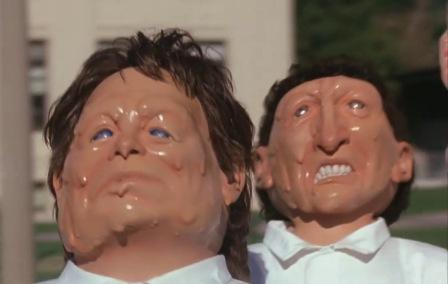Electroma: The Soundtrack

To fully understand the importance of sound in "Electroma", it is necessary to go beyond the simple description of the elements that compose it. It is necessary to immerse oneself in the sound fabric of the film, analyzing how silence, music and sound effects intertwine with images, narration and emotions to create a unique and unforgettable sensory experience.
Silence, far from being a simple void, becomes a character in its own right. It envelops the viewer, isolates him from the outside world and forces him to confront the solitude of the two robots. It is a silence that weighs, that creates expectation and suspense, that amplifies every little noise, every rustle, every breath. In this silence, even the most banal sounds – the wind blowing, footsteps on the sand, the ticking of a clock – acquire a new meaning, becoming clues, signals, emotions.
Music, when it emerges from this silence, does so delicately, almost timidly. It does not burst in, it does not overwhelm, but it insinuates itself discreetly, like a soft light that illuminates a nocturnal landscape. They are evocative, melancholic melodies that reflect the state of mind of the protagonists: nostalgia for a past that does not exist, the desire for an uncertain future, the search for an identity in a world that rejects them.
Each song is carefully chosen to accompany a specific moment, to underline an emotion, to guide the viewer through the characters' inner labyrinth. "The Big Ship" by Brian Eno, with its rarefied atmospheres, transports us to the desert, making us feel the vastness of the spaces and the solitude of the journey. "I Can't Wait Until I See My Baby's Face" by Linda Perhacs, with its poignant sweetness, moves us in front of the fragility of the two robots who, for the first time, look at themselves in the mirror with a human face.
But it's not just about silence and music. It's also a universe of noises, of sound effects that contribute to creating a 360-degree sensory experience. The sound design is taken care of in the smallest details, with an almost maniacal attention to the faithful reproduction of the sounds of the real world: the roar of cars, the crackling of fire, the hissing of the wind. And then there are the artificial, distorted, metallic sounds that accompany the transformation of the robots, creating a sense of unease and anxiety.